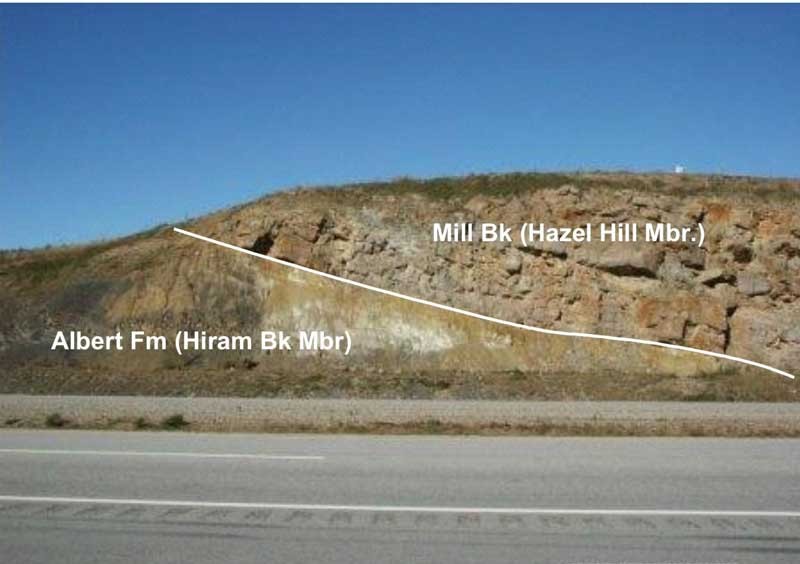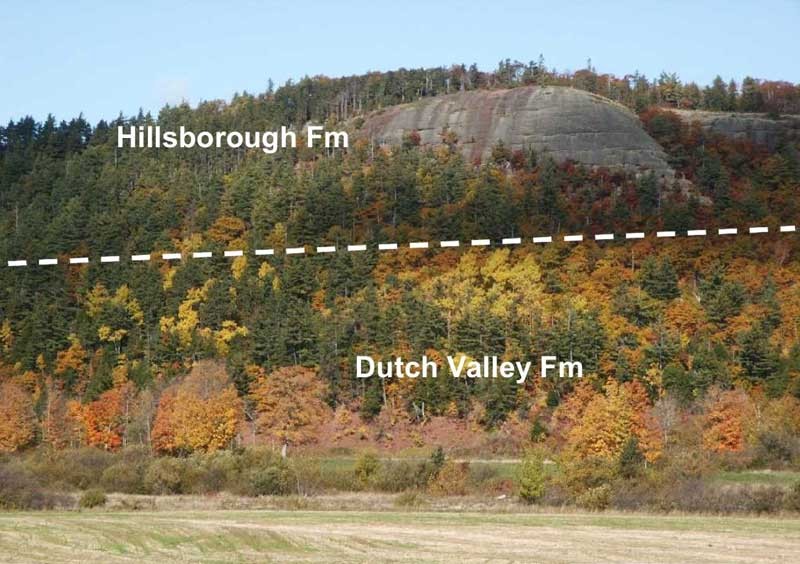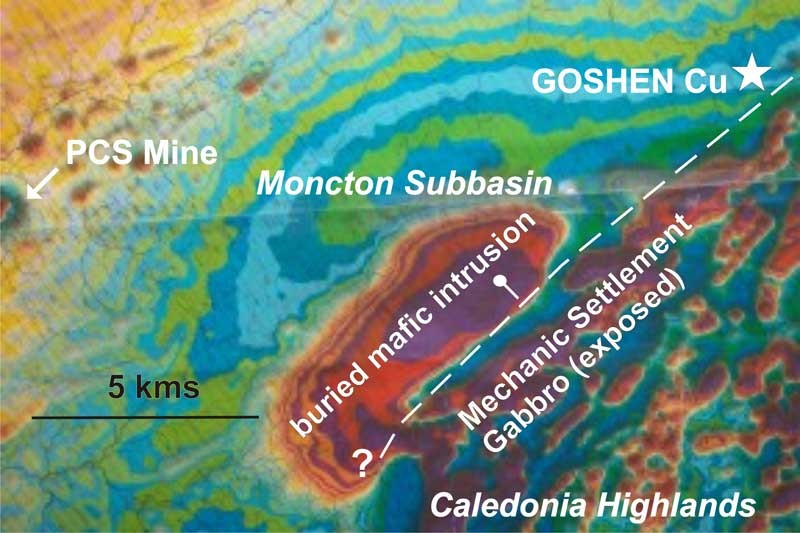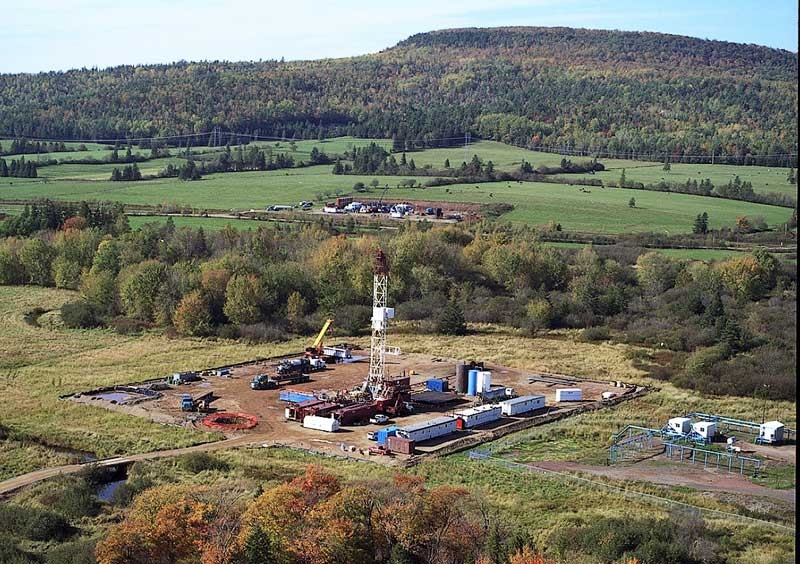Large sections of Albert Formation are exposed on either side of the west- and east-bound lanes of the divided highway west of Sussex. These outcrops illustrate the two essential elements of a petroleum system: source rocks and reservoir rocks. The boundary between the Frederick Brook Member (source) and the overlying Hiram Brook Member (reservoir) of the Albert Formation is particularly well exposed in the sections on both sides of the west-bound lane.
The Frederick Brook beds are brown, kerogenous to highly kerogenous, dolomitic, parallel-laminated to micro-laminated shales and laminated mudstones. The more organic beds will ignite under a flame. These beds typically show slump folds at several scales. The overlying Hiram Brook Member comprises interbedded grey sandstone and shales. The sandstone beds show parallel laminations and excellent examples of wave ripples. The sandstone beds also show low angle small scale planar cross beds and very small scale trough cross beds.
The Frederick Brook Member is typical of the deep organic-rich lacustrine facies of the Albert Formation and is more than likely the main source rock of the oil and gas resources in the Albert Formation, for example the gas at the McCully Field. The Hiram Brook sandstone, with its wave ripples is considered representative of the lacustrine sands that host the McCully gas.




